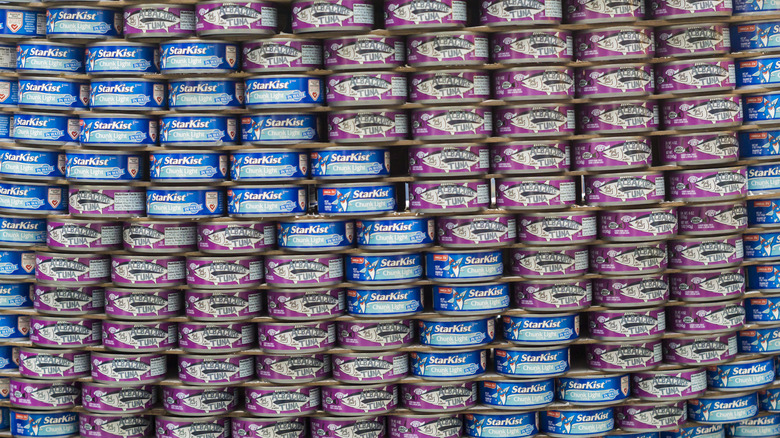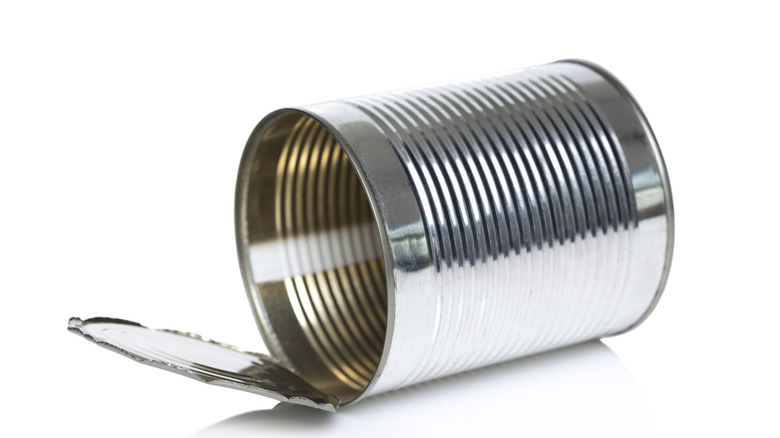The Science Behind Why Canned Foods Are Always Cylindrical
Canned goods are something you might look down on, but there's a good chance you still have some tuna in your cupboard. People will can all sorts of weird stuff — from a whole chicken to PB&J sandwiches to an entire full English breakfast. People even love canning at home, a process that comes with an entire list of mistakes to avoid. And yet, no matter what people decide to preserve, it always seems to come in the same general cylindrical form (or at least a square-ish shape with rounded edges like Spam).
Why, though? Why don't we have full rectangle cans, pyramid cans, or a rhombus can? It turns out there are multiple reasons. It's cheaper for the companies (which isn't surprising since, in a capitalist society, nearly every industry standard will be adopted thanks to cost-efficiency). Still, there's a scientific reason why rounded edges — particularly cylinders — are so standard with canning: round shapes are a lot better at withstanding pressure.
Squared or sharp edges are weak points, while round edges are sturdy
The scientific reasoning here isn't just sound; it makes perfect sense. A rounded edge on a can is one solid piece of metal, whereas a squared edge, by nature, has to consist of two fused pieces of metal. Any time you're fusing two pieces of metal, you'll inevitably introduce a weak point. Even if you reinforce it, it will still not be as strong as a single sheet. Since there are fewer weak points on a cylindrical can than a spherical one, it handles pressure far better. It's the exact same reason air canisters for scuba divers are rounded rather than squared.
Surely a sphere would be better for canning than a cylinder, then? Yes, it would, but then the can would roll directly off the table. A cylinder thus provides all the benefits of a squared shape (ease of storage and transportation, cheaper to produce because they use less metal, keeps your beans from winding up all over the floor) with the benefits of a rounded one (way less likely to rupture or explode).
Cylindrical cans were created 15 years before canning
We've actually known this principle almost since the dawn of canning itself. If you're ever wondering who created cans and why, the answer is a French scientist during the Napoleonic Wars. In 1795, in an effort to help supply troops, the French government offered a reward of 12,000 francs to anyone who could figure out a cheap, effective way to store large amounts of food to be used as military rations. In 1809, a confectioner named Nicolas Appert cracked the code after a 14-year experimentation process. In 1810, Appert was awarded his money, which he used to found the first-ever commercial cannery, the House of Appert, which lasted until 1933. Appert's initial methods were conducted using glass jars, but in 1820, he introduced the form we know today: cylindrical tin cans.
It's interesting that humanity cracked the code on cylindrical cans almost immediately after figuring out how canning worked. So next time you crack open a can of Starkist, be sure to thank Nicolas Appert.


